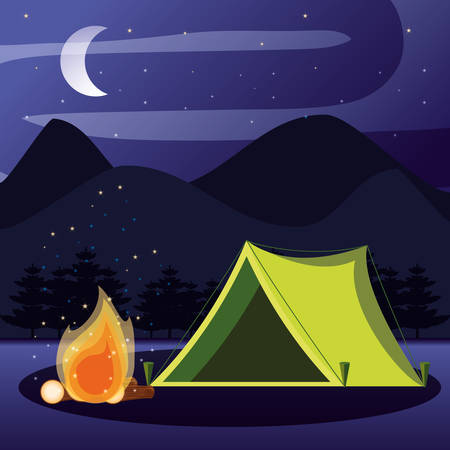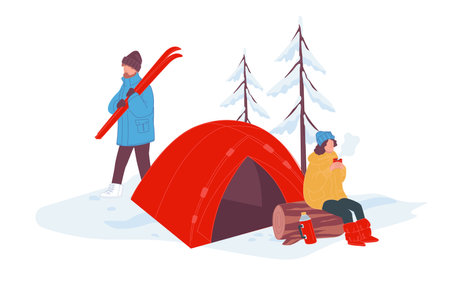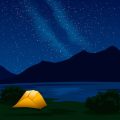1. Assessing the Situation and Staying Calm
When an injury happens out in the wilderness, your first instinct might be to panic—but staying calm is key. Whether its a twisted ankle, a cut, or something more serious, keeping a clear head helps you make better decisions and keeps others around you from panicking too.
Take a Deep Breath and Survey the Scene
Before rushing in to help, stop for a moment and look around. Make sure the area is safe for both you and the injured person. For example, if someone was hurt near a cliff edge or in thick brush, moving them without checking could make things worse.
Key Questions to Ask Yourself:
- Is the scene safe from falling rocks, wildlife, or fire?
- Is the injured person conscious and breathing normally?
- Are there any obvious signs of bleeding or broken bones?
Quick Injury Evaluation Guide
Use this simple table to quickly assess the type and urgency of the injury:
| Injury Type | What to Look For | Immediate Action |
|---|---|---|
| Cuts & Scrapes | Bleeding, dirt in wound | Apply pressure to stop bleeding, clean with water |
| Sprains & Strains | Pain, swelling, limited movement | Rest the area, apply cold if available |
| Bites & Stings | Pain, redness, swelling, possible allergic reaction | Remove stinger if present, monitor for allergy signs |
| Bones & Fractures | Pain, visible deformity, inability to move limb | Straighten only if no pulse is present; otherwise splint as-is |
Stay Level-Headed and Take Control
If youre part of a group, designate someone to help you manage supplies while another keeps others calm. Speak clearly and reassuringly. If youre solo with an injury—or helping someone one-on-one—focus on one task at a time. Panic leads to mistakes.
Tips to Stay Calm Under Pressure:
- Breathe slowly—in through your nose, out through your mouth.
- Mental checklist: Safety first, then evaluate injury.
- If unsure what to do next, pause instead of guessing.
The way you respond in those first few moments can make all the difference. By assessing the situation carefully and staying calm, youre laying a strong foundation for effective first aid in the backcountry.
2. Treating Cuts, Scrapes, and Minor Bleeding
When youre out in the wilderness, even small injuries like cuts and scrapes can turn into bigger problems if not treated correctly. Without access to quick medical care, its important to know how to clean wounds properly, stop bleeding, and prevent infection using your first aid kit and basic supplies.
Clean the Wound Immediately
The first step is always cleaning the wound. Dirt, bacteria, and debris can easily get into open skin while camping. Use clean water—preferably bottled or filtered—to rinse out the cut or scrape. If you have antiseptic wipes or solution like hydrogen peroxide or iodine in your first aid kit, use them to disinfect the area.
Steps to Clean a Wound
| Step | What to Do |
|---|---|
| 1 | Wash hands or wear gloves before touching the wound |
| 2 | Rinse the wound with clean water to remove dirt |
| 3 | Use antiseptic wipes or solution to disinfect |
| 4 | Gently pat dry with sterile gauze or a clean cloth |
Stop Minor Bleeding
If the wound is bleeding, apply gentle pressure with sterile gauze or a clean cloth until it stops. For small cuts and scrapes, bleeding should slow within a few minutes. Elevating the injured area can also help reduce blood flow and speed up clotting.
Apply Bandages Properly
Once the area is clean and dry, cover it with a sterile adhesive bandage or gauze pad. This protects it from dirt and bacteria while it heals. Change the bandage daily or whenever it gets wet or dirty. Keep an eye on the wound for signs of infection like redness, swelling, pus, or warmth.
Quick Bandaging Guide
| Injury Type | Recommended Bandage |
|---|---|
| Small cut or scrape | Adhesive bandage (Band-Aid) |
| Larger surface abrasion | Sterile gauze pad with medical tape |
| Bleeding cut that won’t stop quickly | Pressure dressing and seek further help if needed |
Avoid Infection in Remote Areas
The risk of infection increases when youre far from medical facilities. Always carry antibiotic ointment like Neosporin in your camping first aid kit. Apply a thin layer after cleaning and before bandaging the wound. Monitor healing daily and don’t ignore signs of infection—if things worsen, seek professional help as soon as possible.
Pro Tip:
Packing an extra pair of disposable gloves, antiseptic wipes, and waterproof bandages can make a big difference when treating wounds outdoors.

3. Handling Burns from Campfires and Stoves
Burns are one of the most common injuries when camping, especially around campfires, portable stoves, or hot cookware. Whether its a quick brush against a hot pot or an accidental spark from the fire, knowing how to respond quickly and correctly can prevent further damage and ease pain.
First Steps: Cool the Burn
As soon as someone gets burned, your first goal is to cool the area down to reduce heat in the skin and prevent it from getting worse.
- Do: Run cool (not cold) clean water over the burn for at least 10–20 minutes if possible.
- If water isn’t available: Use a wet, clean cloth or compress. Even a bottle of clean drinking water will help in a pinch.
- Don’t: Use ice or very cold water—it can cause more skin damage.
Covering the Burn
Once the burn is cooled, keep it protected from dirt and bacteria. This is especially important in the wilderness where clean environments are hard to maintain.
- Use: A sterile gauze pad or a clean, non-fluffy cloth to loosely cover the burn.
- Avoid: Using cotton balls or anything that might leave lint in the wound.
- Do not: Pop blisters if they form. They protect underlying skin from infection.
What to Avoid Putting on Burns
Certain home remedies may sound helpful but can actually make things worse when youre far from professional care.
| Substance | Why You Should Avoid It |
|---|---|
| Butter or oils | Traps heat and may cause infection |
| Toothpaste | Irritates the skin and isn’t sterile |
| Aloe vera gel (unless pure) | Some commercial gels contain alcohol or additives that can worsen burns |
Pain Relief and Monitoring
Mild burns usually heal on their own with proper care, but pain management is still important—especially during outdoor adventures.
- Pain relief: Over-the-counter meds like ibuprofen or acetaminophen can help reduce pain and swelling. Always pack some in your first aid kit.
- Watch for signs of infection: Redness spreading from the burn, increased pain, pus, or fever means you need medical help ASAP—even if you have to cut your trip short.
When to Seek Emergency Help
If you notice any of these symptoms, it’s time to head out for medical attention:
- The burn is larger than your palm
- The skin is white, charred, or leathery-looking
- The burn is on sensitive areas like the face, hands, feet, groin, or over joints
- You see signs of shock: clammy skin, weakness, confusion
Quick Tip:
Always bring a well-stocked first aid kit with burn dressings and antibiotic ointment when heading into remote areas. Preparation makes all the difference when help isn’t close by.
4. Managing Sprains, Strains, and Broken Bones
Out in the wilderness, it’s easy to twist an ankle on a rocky trail or take a tumble that leads to a more serious injury like a broken bone. Knowing how to manage sprains, strains, and fractures can make a big difference while waiting for help or continuing your trip safely.
Spotting the Difference
It helps to know what kind of injury youre dealing with. Heres a quick guide:
| Type of Injury | Symptoms |
|---|---|
| Sprain | Swelling, bruising, pain around a joint (like an ankle or wrist), limited mobility |
| Strain | Pain in muscles or tendons, muscle spasms, swelling, difficulty moving the muscle |
| Broken Bone (Fracture) | Severe pain, swelling, deformity, inability to move limb, possible bone protrusion (in open fractures) |
Immobilizing the Injury
If you suspect a fracture or a severe sprain/strain, keep the injured area as still as possible. Use materials from your first aid kit or surroundings to create a splint. Heres how:
- For arms: Use sticks or trekking poles wrapped with clothing or bandanas to stabilize the arm. A shirt or triangular bandage can act as a sling.
- For legs: Splint the injured leg by binding it to the uninjured leg using belts, straps, or cloth strips.
Reducing Swelling and Easing Pain
The R.I.C.E. method is your go-to for minor injuries like sprains and strains:
- Rest: Stop using the injured area.
- Ice: Apply cold packs if available (or cool river water-soaked cloth) for 15-20 minutes every hour.
- Compression: Wrap the area gently with an elastic bandage to control swelling—don’t wrap too tight.
- Elevation: Keep the injured limb raised above heart level if possible.
Pain Relief Options
If you have over-the-counter meds in your pack like ibuprofen (Advil) or acetaminophen (Tylenol), they can help reduce pain and inflammation. Always follow dosage directions on the packaging.
If You Must Continue Hiking
If evacuation isn’t possible right away and you need to move, take precautions:
- Create a sturdy splint that won’t shift during movement.
- Pace yourself and rest often—don’t push through severe pain.
- If its a lower-body injury, consider making a crutch from branches to take weight off the leg.
Avoid walking on suspected fractures unless absolutely necessary—it could worsen the injury. When in doubt, stay put and signal for help using a whistle, mirror, or emergency beacon if available.
5. Dealing with Insect Bites, Stings, and Allergic Reactions
When youre out camping, its almost impossible to avoid bugs entirely. From mosquitoes to bees, insect bites and stings are common in the wilderness. Most of them are harmless and cause minor discomfort, but some can lead to serious allergic reactions. Heres how to handle these situations safely and effectively.
Common Bug Bites and Stings
The table below shows typical symptoms and first aid tips for common insect encounters:
| Insect | Common Symptoms | First Aid Tips |
|---|---|---|
| Mosquito | Itchy red bumps | Wash area, apply anti-itch cream or calamine lotion |
| Bee or Wasp | Pain, swelling, redness at sting site | Remove stinger if visible, wash area, apply ice pack |
| Tick | Bite site may look like a bullseye rash (in some cases) | Use tweezers to remove tick slowly and clean the area |
| Spider (non-venomous) | Mild pain, redness, swelling | Clean bite area, use cold compress, monitor for signs of infection |
Signs of Serious Allergic Reactions
Some campers may experience more than just localized pain or itching. An allergic reaction can become life-threatening quickly. Be on the lookout for these symptoms:
- Swelling of the face, lips, tongue, or throat
- Trouble breathing or wheezing
- Dizziness or fainting
- Nausea or vomiting
- Rapid heartbeat
- Hives spreading beyond the bite/sting site
If You Suspect Anaphylaxis:
Anaphylaxis is a severe allergic reaction that requires immediate action. Heres what you should do:
- Use an epinephrine auto-injector (EpiPen) if available. Inject it into the outer thigh through clothing if necessary.
- Call 911 immediately.
- Lay the person flat, elevate their legs unless they’re having trouble breathing.
- If breathing stops or they lose consciousness, begin CPR if trained.
Preventing Bug Bites While Camping
- Wear long sleeves and pants during peak bug hours (dawn and dusk).
- Use EPA-approved insect repellents containing DEET or picaridin.
- Avoid wearing strong scents like perfumes or scented lotions.
- Keep tents zipped up and inspect sleeping areas before bed.
Pro Tip:
If you or someone in your group has a known allergy to insect stings, always bring an EpiPen and let others know where it’s stored in case of emergency.
6. When to Seek Help and Evacuate
When youre out in the wilderness, its important to know when a situation is too serious to handle on your own. Some injuries go beyond basic first aid and need professional medical attention. Heres how you can tell if its time to call for help or start planning an evacuation.
Signs That an Injury Needs Medical Attention
If someone in your group has any of the following symptoms or conditions, its best to seek help immediately:
| Symptom or Condition | Why Its Serious |
|---|---|
| Uncontrolled bleeding | Blood loss can lead to shock or death if not treated quickly. |
| Head injury with confusion or unconsciousness | Could indicate a concussion or brain trauma. |
| Broken bones (especially legs or back) | May require immobilization and cant be treated properly in the field. |
| Severe allergic reaction (anaphylaxis) | Can cause swelling of airways; may need epinephrine and emergency care. |
| Signs of infection (fever, redness, pus) | Infections can spread fast without antibiotics. |
| Snake bite or unknown animal bite | Might involve venom or risk of rabies. |
| Persistent chest pain or difficulty breathing | Could be signs of a heart attack or respiratory issue. |
How to Signal for Help in the Wilderness
If youre in a remote area with no cell service, youll need to rely on other ways to get attention. Here are some common methods:
- Whistle blasts: Three short blasts is the international signal for help.
- Signal mirror: Reflect sunlight toward rescue aircraft or distant searchers.
- SOS signal: Use rocks, logs, or flashlight flashes to create an SOS (three short, three long, three short).
- Bright clothing or gear: Lay them out in open areas so rescuers can spot you more easily from above.
- Satellite messengers: Devices like Garmin inReach or SPOT can send emergency signals even without cell coverage.
Evacuation Options
If someone needs to be evacuated, consider these options based on your location and resources:
| Evacuation Method | Best Used When… |
|---|---|
| Self-evacuation (walking out) | The injured person is stable and mobile with assistance. |
| Carries/stretcher evacuation by group members | The injury prevents walking but you’re close to a trailhead or help. |
| Calling for airlift/rescue team via satellite device | You’re deep in the backcountry and cant move the injured person safely. |
| Sending someone for help | You have no communication devices and must alert authorities manually. |
Tip:
If you have to send someone for help, make sure they carry detailed information: exact location (GPS coordinates if possible), description of the injury, number of people in your group, and any medical supplies available.
Stay Calm and Think Clearly
Panic wont help anyone. Take a moment to assess the situation calmly before making decisions. Knowing when to seek help could be what saves a life during your camping trip.


